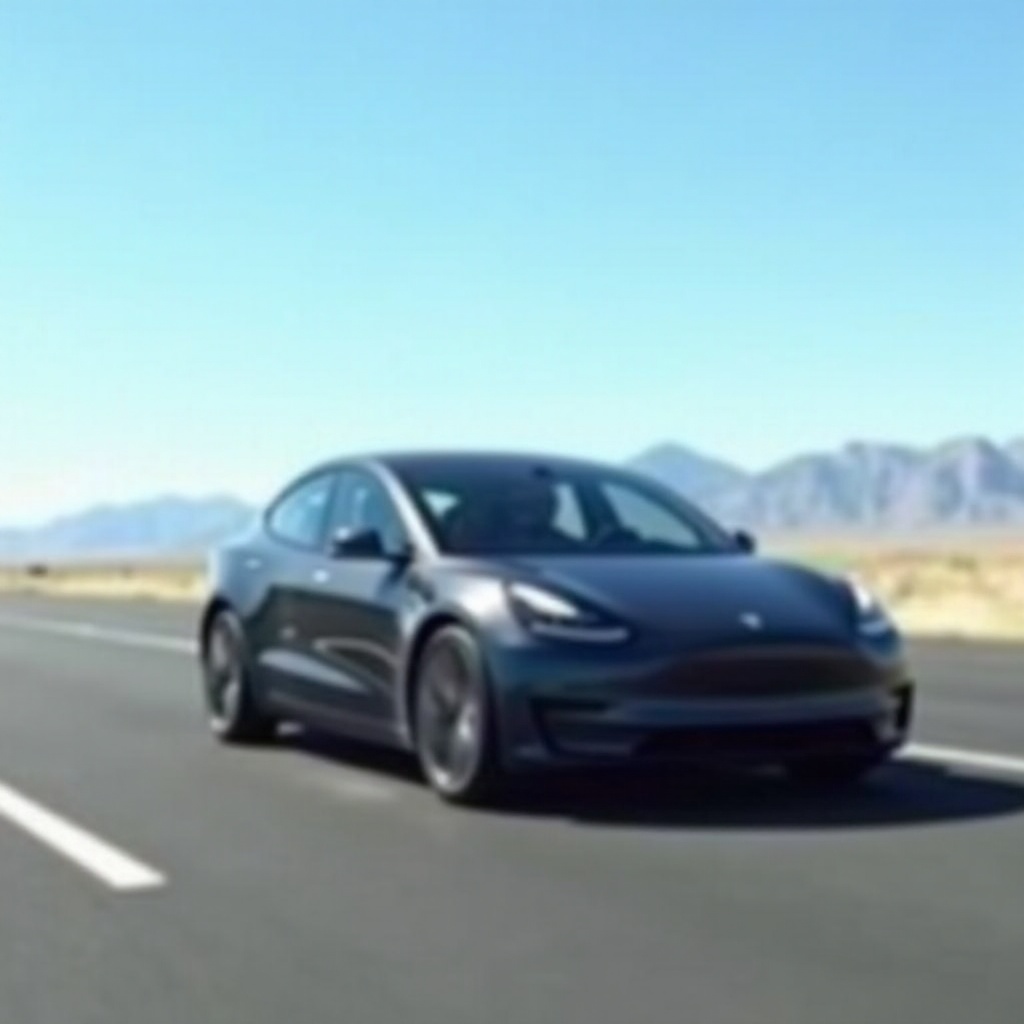Introduction
Understanding the miles per gallon equivalent (MPGe) of your Tesla Model 3 is crucial for making informed decisions about your vehicle’s efficiency and cost-effectiveness. This guide will help you grasp the concept of MPGe, how the Model 3 measures up, and factors that can influence its performance.

What is MPGe and Why It Matters?
The concept of MPGe, or miles per gallon equivalent, is a metric used to compare the energy consumption of electric vehicles (EVs) with traditional gasoline cars. MPGe quantifies how far a car can travel on the same energy content as a gallon of gasoline. For EV owners, this metric simplifies understanding energy efficiency, making it easy to assess and compare your vehicle’s performance.
High MPGe values indicate an energy-efficient car, translating to lower operating costs and reduced environmental impact. Moreover, since MPGe impacts your vehicle’s running cost, it’s an essential factor to consider for long-term savings.

Tesla Model 3 MPGe Breakdown
Standard Range
The Tesla Model 3 Standard Range presents a user-friendly balance between cost and efficiency. With an EPA-rated MPGe of approximately 141 in city driving, 127 on highways, and a combined rating of 132 MPGe, this variant ensures you get optimal efficiency for your daily commutes.
Long Range
For those desiring extended travel with fewer charging stops, the Long Range Model 3 offers around 134 MPGe in the city, 123 on highways, and a combined 130 MPGe. These impressive numbers make it a favorite for long-distance travelers seeking both efficiency and convenience.
Performance
The Performance variant of the Model 3 combines speed and efficiency. Despite its sportier attributes, it still boasts high efficiency with an EPA-rated 118 MPGe in the city, 107 on highways, and a combined rating of 113 MPGe.
Each version of the Tesla Model 3 offers distinct advantages, enabling you to select the best fit for your lifestyle without sacrificing efficiency.
Real-World Performance vs. EPA Ratings
While the EPA ratings provide a benchmark for vehicle performance, real-world conditions often present variations. Factors such as terrain, driving style, and load can cause deviations from these ratings. Users frequently report slight differences in their Model 3’s efficiency compared to EPA values. However, these differences are generally minor, ensuring that Tesla’s performance remains surprisingly close to EPA estimates.

Factors Affecting MPGe
Driving Habits
How you drive significantly affects your Tesla’s MPGe. Aggressive driving, rapid acceleration, and frequent hard braking reduce efficiency. Opt for smooth, controlled driving and utilize regenerative braking to maximize your vehicle’s efficiency.
Environmental Conditions
Weather and terrain impact your vehicle’s energy use. Cold temperatures can decrease battery efficiency, while hilly terrains demand more energy. Plan your trips considering current conditions to better manage your car’s energy consumption.
Car Maintenance
Maintaining your Tesla in top condition ensures optimal performance. Regular tire checks, software updates, and battery care contribute to preserving the vehicle’s MPGe. Address any mechanical issues promptly to avoid efficiency drops.
Understanding how these elements impact MPGe will help in ensuring you get the most out of your Tesla Model 3, both in terms of performance and cost savings.
Cost Efficiency and Long-Term Savings
Opting for a Tesla Model 3 not only yields high MPGe but also translates into significant cost savings over time. Electricity is generally cheaper than gasoline, meaning lower fuel expenses. Moreover, the Model 3’s reduced need for maintenance, thanks to fewer moving parts, culminates in extensive savings over the vehicle’s lifespan.
Additionally, many regions offer incentives for electric vehicle owners, further enhancing the long-term savings. A Tesla Model 3 isn’t just an eco-friendly choice, but also a financially savvy investment.
Conclusion
The Tesla Model 3 stands as a paragon of efficiency, blending innovative engineering with remarkable performance metrics. Understanding and optimizing the MPGe of your Model 3 ensures you capitalize on these benefits. Whether evaluating initial purchase options or day-to-day operations, your Tesla’s MPGe offers valuable insights into efficiency and cost savings.
Frequently Asked Questions
How is MPGe different from MPG?
MPGe, or miles per gallon equivalent, converts the energy used by electric vehicles into a gasoline equivalent, facilitating a direct comparison with traditional fuel vehicles. Unlike miles per gallon (MPG), which measures how many miles a gasoline car can travel per gallon of fuel, MPGe measures efficiency in consistent energy units.
How does Tesla Model 3 compare to other electric vehicles in terms of MPGe?
The Tesla Model 3 boasts impressive MPGe ratings that rival and often surpass other electric vehicles in its class. Its combination of high efficiency, range, and performance makes it a leading choice for individuals looking for both functionality and economy.
Can I improve the MPGe of my Tesla Model 3 by modifying my driving habits?
Yes, you can enhance your Tesla Model 3’s MPGe by adopting smooth driving techniques, which include gentle acceleration, consistent speeds, and effective use of regenerative braking. Additionally, maintaining your vehicle and planning trips considering environmental factors help in optimizing its efficiency.


